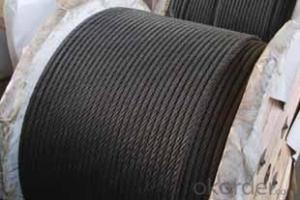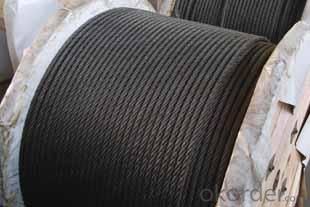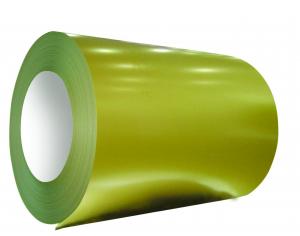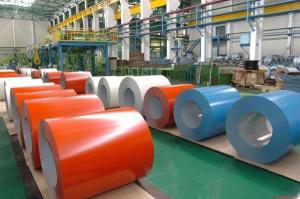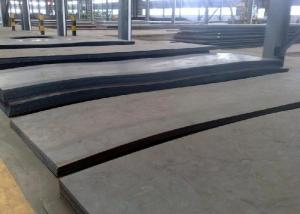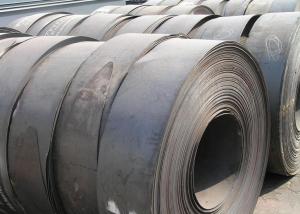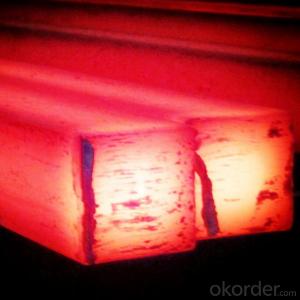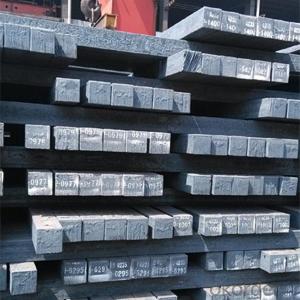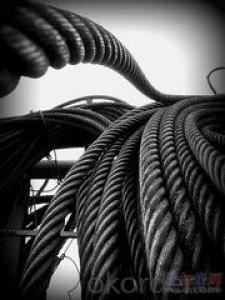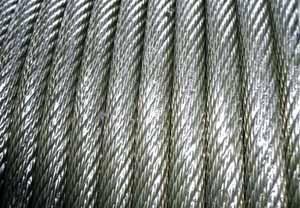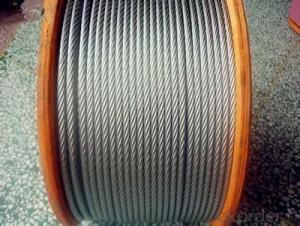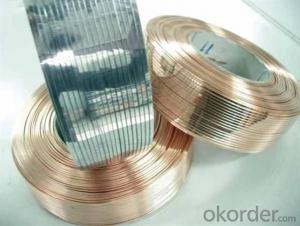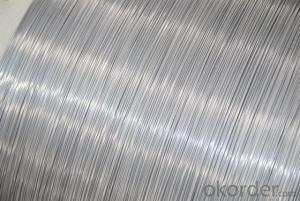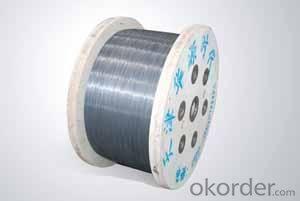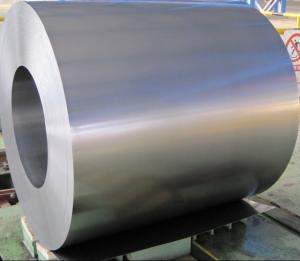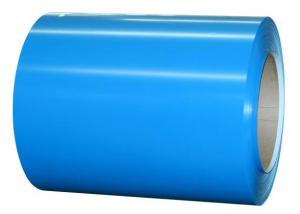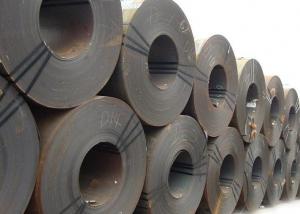STEEL WIRE ROPE FOR ELEVATOR
- Loading Port:
- China Main Port
- Payment Terms:
- TT OR LC
- Min Order Qty:
- -
- Supply Capability:
- -
OKorder Service Pledge
OKorder Financial Service
You Might Also Like
Standard:GB/T 8903-2005 standard
APPLICATION: Lifting, Hoisting

size | weight | tensile | ||||||||||
1570 | 1670 | 1770 | 1870 | 1960 | ||||||||
mm | Kg/100m | Break Min. | ||||||||||
FIBER | STEEL | FIBER | STEEL | FIBER | STEEL | FIBER | STEEL | FIBER | STEEL | FIBER | STEEL | |
6 | 13.3 | 14.6 | 18.6 | 20.1 | 19.8 | 21.4 | 21.0 | 22.7 | 22.2 | 24.0 | 23.3 | 25.1 |
7 | 18.1 | 19.9 | 25.4 | 27.4 | 27.0 | 29.1 | 28.6 | 30.9 | 30.2 | 32.6 | 31.7 | 34.2 |
8 | 23.6 | 25.9 | 33.1 | 35.7 | 35.2 | 38.0 | 37.3 | 40.3 | 39.4 | 42.6 | 41.4 | 44.6 |
9 | 29.9 | 32.8 | 41.9 | 45.2 | 44.6 | 48.0 | 47.3 | 51.0 | 49.9 | 53.9 | 52.4 | 56.5 |
10 | 36.9 | 40.5 | 51.8 | 55.8 | 55.1 | 59.4 | 58.4 | 63.0 | 61.7 | 66.5 | 64.7 | 69.8 |
11 | 44.6 | 49.1 | 62.6 | 67.6 | 66.6 | 71.9 | 70.6 | 76.2 | 74.6 | 80.5 | 78.3 | 84.4 |
12 | 53.1 | 58.4 | 74.6 | 80.4 | 79.3 | 85.6 | 84.1 | 90.7 | 88.6 | 95.8 | 93.1 | 100 |
13 | 62.3 | 68.5 | 87.5 | 94.4 | 93.1 | 100 | 98.7 | 106 | 104 | 112 | 109 | 118 |
14 | 72.2 | 79.5 | 101 | 109 | 108 | 116 | 114 | 123 | 120 | 130 | 127 | 137 |
16 | 94.4 | 104 | 132 | 143 | 141 | 152 | 149 | 161 | 157 | 170 | 166 | 179 |
18 | 119 | 131 | 167 | 181 | 178 | 192 | 189 | 204 | 199 | 215 | 210 | 226 |
- Q: What are the different types of steel pipes and tubes?
- There are several different types of steel pipes and tubes, including seamless pipes, welded pipes, galvanized pipes, stainless steel pipes, and structural tubes.
- Q: How does steel pipe coating for natural gas pipelines work?
- Steel pipe coating for natural gas pipelines works by applying a protective layer on the surface of the pipe to prevent corrosion and ensure its longevity. This coating is usually made of fusion-bonded epoxy or other corrosion-resistant materials. The pipe is cleaned and preheated, and then the coating material is applied through a specialized process such as spraying or wrapping. Once the coating is applied, it is cured to form a strong bond with the pipe surface. This layer acts as a barrier against moisture, chemicals, and other elements, safeguarding the pipeline and maintaining the integrity of the natural gas transportation system.
- Q: How is steel used in the construction of shopping malls and retail centers?
- Steel is used extensively in the construction of shopping malls and retail centers due to its strength, durability, and versatility. It is commonly used for the structural framework, such as columns, beams, and roof trusses, providing stability and support to the entire building. Additionally, steel is utilized in the construction of escalators, elevators, stairways, and mezzanines within these facilities. Its ability to withstand heavy loads and resist fire makes it an ideal material for ensuring the safety and longevity of shopping malls and retail centers.
- Q: How do steel products contribute to the food and beverage industry?
- Steel products contribute to the food and beverage industry by providing essential equipment and infrastructure. Steel is used to manufacture food processing machinery, such as mixers, extruders, and cutting equipment, which helps streamline production processes and improve efficiency. Steel storage tanks and containers ensure the safety and hygiene of food and beverages during transportation and storage. Additionally, steel is used to construct commercial kitchens, refrigeration units, and packaging materials, ensuring that the food and beverage industry operates smoothly and maintains high standards of quality and safety.
- Q: How is steel used in the production of construction machinery?
- Steel is commonly used in the production of construction machinery due to its strength, durability, and versatility. It is used to manufacture various components such as the chassis, frames, buckets, and booms, providing the necessary structural support and resistance to heavy loads and harsh working conditions. Additionally, steel's ability to be easily molded and welded allows for the creation of complex and intricate machinery designs, ensuring optimal performance and safety on construction sites.
- Q: What are the applications of alloy steel in manufacturing?
- Alloy steel is widely used in manufacturing due to its exceptional properties and versatility. It is utilized in various applications such as the production of machinery, automotive parts, tools, construction materials, and even in the aerospace industry. The high strength, durability, and resistance to corrosion and wear make alloy steel ideal for manufacturing components that require high tensile strength, toughness, and the ability to withstand harsh environments. Additionally, alloy steel can be easily machined, welded, and heat-treated, allowing for greater flexibility in the manufacturing process.
- Q: How is steel used in the transportation industry?
- Steel is used extensively in the transportation industry due to its strength and durability. It is used in the construction of car frames, train tracks, and bridges, ensuring safety and stability. Additionally, steel is used in the manufacturing of ship hulls and aircraft structures, enabling them to withstand harsh environments and maintain their structural integrity.
- Q: How is steel tubing used in heat exchangers?
- Steel tubing is commonly used in heat exchangers due to its excellent thermal conductivity and durability. It is employed to create the primary heat transfer surface within the heat exchanger, allowing efficient transfer of heat from one fluid to another. The steel tubing's high strength and resistance to corrosion ensure the heat exchanger's longevity and reliability, making it a preferred choice in various industrial applications.
- Q: How is steel wire rope lubricated for optimal performance?
- Steel wire rope is lubricated for optimal performance by applying a suitable lubricant to the individual wires and strands of the rope. This lubricant helps to reduce friction, prevent corrosion, and extend the lifespan of the rope. Various methods such as immersion, spray, or brushing can be used to ensure thorough lubrication of the wire rope. Regular and proper lubrication is essential to maintain the flexibility, strength, and overall performance of the steel wire rope.
- Q: What are the key characteristics of stainless steel?
- The key characteristics of stainless steel include its corrosion resistance, high strength, durability, and low maintenance requirements. It is also known for its heat resistance, aesthetic appeal, and ability to be easily fabricated into various shapes and forms.
Send your message to us
STEEL WIRE ROPE FOR ELEVATOR
- Loading Port:
- China Main Port
- Payment Terms:
- TT OR LC
- Min Order Qty:
- -
- Supply Capability:
- -
OKorder Service Pledge
OKorder Financial Service
Similar products
Hot products
Hot Searches
Related keywords
